
A few years ago I began to notice a very tall, stately grass growing on the roadsides on my daily commute. I only seemed to find it growing in southernmost Illinois. Without any good places to pull over my car on the roadsides, I wasn’t able to get a closer look. Then one day I got an email asking questions about this mystery grass! A landowner had it blooming on their property and wanted it identified. They also wanted to know if it was native or non-native since it was growing in their pollinator fields.
This led me to explore the Plume Grasses, in the genus Erianthus (formerly Saccharum). In Illinois there are five species of plume grasses. Four of them are native to the state, and they are all restricted to the southernmost counties of Illinois. The fifth species is non-native and could be found throughout Illinois where it escaped from cultivation. Let’s take a closer look at these grasses.
General characteristics
These grasses are robust, tall, warm-season bunchgrasses. They can grow to heights over 12 feet tall, with their inflorescences getting up to 2 feet tall. Their bunches can grow to 5 feet in diameter. They have thick stems and long, tapering leaves. They bloom in the fall.
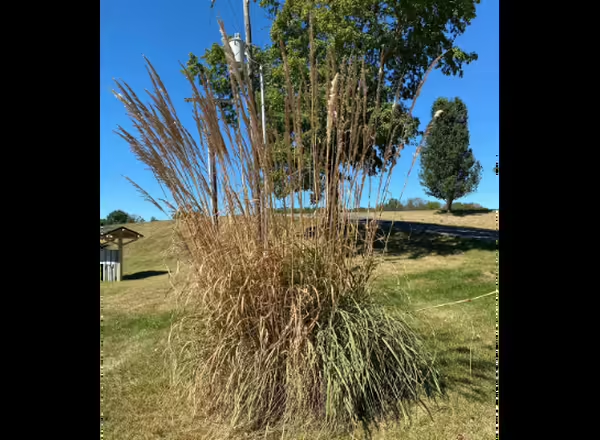
Which one isn’t like the others?
Ravenna Grass, or Hardy Pampas Grass, Erianthus ravennae, is the non-native plume grass found in Illinois. The easiest way to tell it apart from the other grasses is to measure the awns (stiff, bristle-like structures that emerge from the tip of the spikelet) of the spikelets (flowering units) when it is in bloom. This grass has awns under 6mm in size, while the other plume grasses have awns over 10mm in length.
This grass is not recommended for planting because of its invasive potential. A possible replacement with a similar look, although smaller in size, is Indian Grass. It produces plume-like inflorescences and has a bunchgrass form.

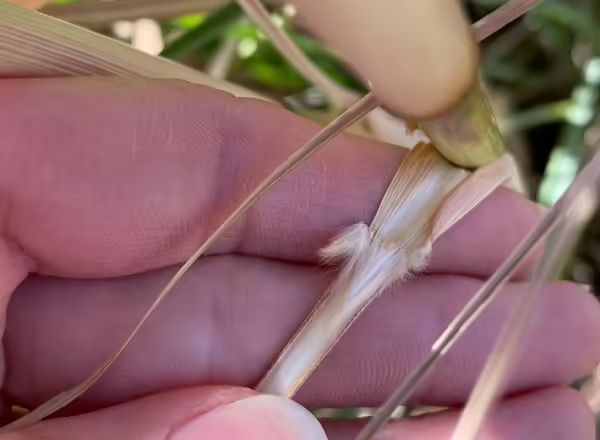
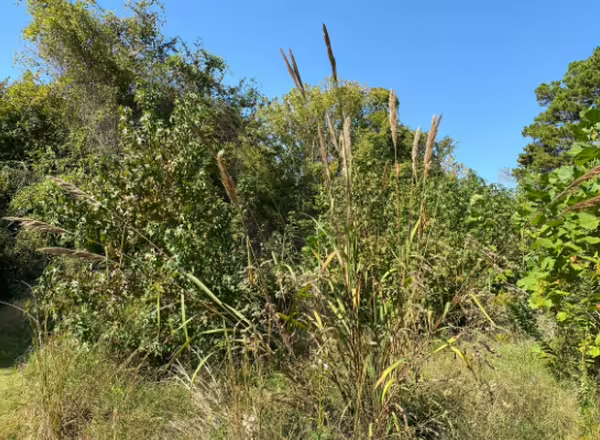
The native plume grasses
This year I noticed that we had one bunch of plume grass growing behind our office. I went out and tried to identify it, and I ended up with two options: either Sugarcane Plume Grass, Erianthus giganteus or Silver Plume Grass, Erianthus alopecuroides. These grasses are nearly identical in their characteristics.
This grass towered over me, easily 10 feet tall in bloom. Its leaves are over 2 feet long and about an inch wide, with a prominent midrib. On the tops of the leaves near the base you can find coarse hairs. There is a hairy ligule at the base of the leaf blade where it becomes the sheath and wraps around the stem. The inflorescence (flowering cluster) is a branched panicle over a foot in size. The bottom of the stem under the panicle is covered in silky hairs. The spikelets (flowering units) are surrounded by soft hairs.
There are two main diagnostic differences between these two species of plume grasses are:
- The awns (stiff, bristle-like structures that emerge from the tip of the spikelet) in Sugarcane Plume Grass are over 10mm long and relatively straight, while the awns in Silver Plume Grass are over 10mm long and twist when the grass is mature.
- The color of the inflorescence varies between the two. This color comes from the dense silky hairs on the spikelets, and for me, depending on the lighting led me to see both color options in this grass. Sugarcane Plume grass has a more brown to purple inflorescence, while Silver Plume Grass has a more silvery colored inflorescence.
Where did this leave me? At first I wrote this blog saying that this was Sugarcane Plume Grass. But over the past couple of days, the awns on the spikelets I brought inside and set on my desk slowly started to twist! There's no denying the twist of the awns, so I have to change my mind and go with Silver Plume Grass. Now, does the species in this case really matter? This might be a case where discovering you have the native species and not the non-native one might have been enough for you. Or you could want the final answer like I did. Remember I still had two other options! The four native plume grasses have some differences between them in hairiness of the flowering stems under the inflorescences, twistiness of the awns, and width of the leaves, which allowed me to eliminate the other two much more quickly.
Have you seen a Plume Grass before? Was it Ravenna Grass or one of the native species?
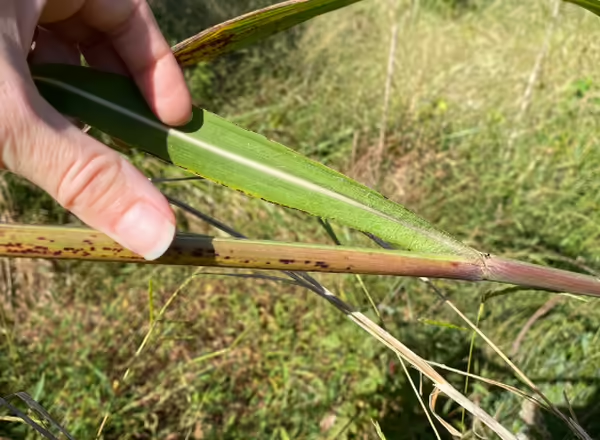
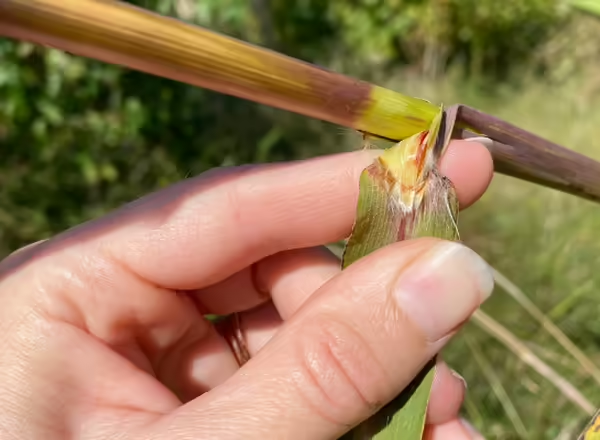



Need a refresher on grass identification terms? Check out this blog post!
Thank you for reading!
Never miss a new post! Subscribe to our email list to get updates each time a new post is available.
Give us feedback! How helpful was this information (click one): Very helpful | Somewhat helpful | Not very helpful
ABOUT THE AUTHOR: Erin Garrett is a Natural Resources, Environment, and Energy Educator for University of Illinois Extension serving Alexander, Johnson, Massac, Pulaski, and Union counties. Erin develops and delivers high impact programming to adults and youth to help them develop an appreciation for natural resources and to empower them to make small changes to positively impact the environment. Erin’s programming focuses on why homeowners should consider choosing native plants, how to support native pollinators, how to identify grasses, how to identify and manage invasive species, and developing an appreciation for prairie ecosystems.